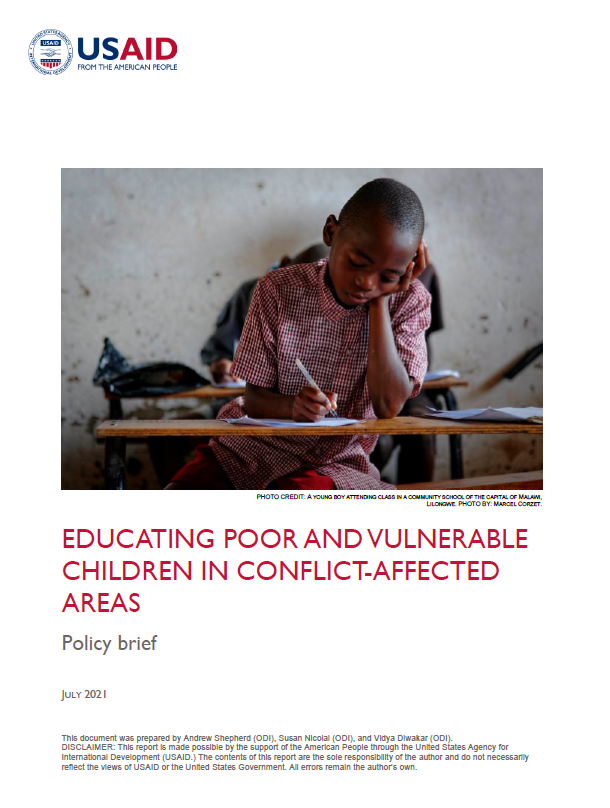Education is recognized to be a ‘portable asset’ (Bird et al. 2010)—one with intrinsic as well as instrumental value and with the potential to contribute to sustained escapes from poverty (Diwakar et al. 2021). However, education access might be compromised in areas affected by armed conflict due to various supply- and demand-side factors. These range from limited state budgets, destruction of infrastructure, displacement of students and teachers, constrained household expenditures, and a general context of insecurity that may limit decisions to enroll. In this way, conflict “damages education from above [through national budgets] and below [through household budgets]” (UNESCO 2011).
Accordingly, a context-specific selection of demand-supporting as well as supply-enhancing measures for promoting formal education is needed in conflict-affected areas (CAAs). Supporting demand for education is critical in CAAs, as conflict can so easily reinforce other constraints on demand. Key demand-boosting measures more generally include: early childhood care and education; school feeding; enhancing quality throughout the system (especially in the early years of primary school); special attention to ensure the continued education of girls; and support for vulnerable children in their transitions between education levels and into the labor market, self-employment or further training. Though not specific to CAAs, a focus on these measures could help ease the financial constraints of households in CAAs, so that the motivation to support children through education remains strong for parents and wider social networks.
There are also supply-side fundamentals which need to be assured in CAAs: above all, that schools need to be safe and secure. Other supply-side needs in CAAs include: improving infrastructure and resources (including teaching materials and updated curricula) to maintain education systems amid widespread insecurity and the destruction (UNESCO 2011); teacher training for work in CAAs; and addressing distributional effects stemming from factors such as restrictions in population movements or the co-option of education by conflict parties (Justino 2016). This is often a big issue in CAA where schools, especially at secondary level, can be arenas of conflict for warring parties.
This brief recommends education policy and programming priorities stemming from recent research on education, conflict, and resilience in sub-Saharan Africa (see Box 1). Based on the research findings, it draws attention to how to meet challenges related to opportunity costs (by investigating how to support poor and vulnerable children into secondary education, and how to improve quality), and how to help link education with labor markets to strengthen households’ financial resilience in CAAs.
Authors: Andrew Shepherd (ODI), Susan Nicolai (ODI), and Vidya Diwakar (ODI).


